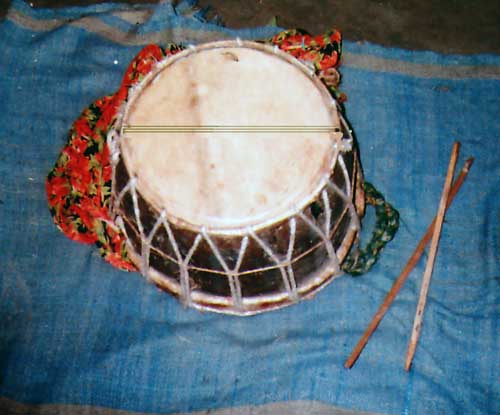Folk Drums of Northern Bangladesh & N.E. India

Jhorka and Korka are two folk drums found in the music of Northern Bangladesh. Although the two are nearly identical, the jhorka is a snare drum while the korka is a tom.
This drum is very popular in the folk music of northern Bangladesh. It is commonly used in the vaoiaya (bhawaia) style of folk music, and is an absolute must for the lathi khela and the lathi naach. It is generally used to accompany the dhol.
These drums are played with two sticks made of strips of bamboo. It is slung around the neck while being played.

The drum has an interesting construction. It is a two sided drum similar to a snare drum or a tom, with the exception that both sides are greatly dissimilar in size. The larger face of the drum is roughly 36-38 cm (approx 15 inches); this is the playing side. The smaller end is only about 29-30cm (approx 11 inches); this side is not struck. The drum skins are generally cow hide or goat skin. The body of the drum is generally made of mango wood; mango wood is known for its light weight, and easy of working. Lacing of the drum is generally accomplished using jute rope and rawhide.

The distinction between the jhorka and the korka is to be found on the smaller head of the drum. The jhorka has a snare at the bottom of it; this is generally made by stringing three pieces of string across the surface of the drum. The korka on the other hand, has a simple head without a snare. Although the other aspects of construction may be identical, the presence or absence of the snare makes a big difference in the tone of the instrument.
